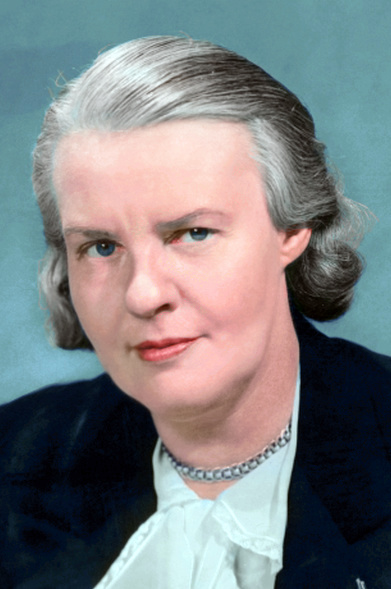The Evening Star (March 1, 1946)

ON THE RECORD —
France faces threat of Communist iconism
By Dorothy Thompson
A report on “intellectuals and the French renaissance,” from a recent congress of the French Communist Party, reads almost exactly like Hitler’s views on art, and threatens that the new iconism, the outward manifestation of Fuehrer-worship, may shortly engulf France.
A visitor to Hitlerite Germany was nauseated by ubiquitous chromos of the Fuehrer, which had to be exhibited in every office and home. The new court painters, who made a very good thing out of ideological reliability, depicted him always in a highly idealized manner, as the brooding philosopher, the powerful orator, or the armored knight, and for a few marks every household could (and had darned well better) display him in the place of honor, preferably with a vase of flowers underneath his enframed visage. Visitors to office or family were thus reminded by the picture to salute and heil.
Whenever Russian occupation armies marched, they were accompanied by truckloads of new icons. Now Stalin’s face, blazoned on banners, was carried as though it were a monstrance in a religious procession, and appeared overnight in every shop, while tens of thousands of Red paper flags fluttered from all the windowsills. In Czechoslovakia it gave one a remarkable impression of a change in actors, but not in the play itself. One looked in vain for the face of Roosevelt. Occasionally, amidst the red mass and the ubiquitous face one saw a little American flag, cut out of paper and crudely colored with crayons, hung out, one felt, with half-defiant nonconformism.
![]()
Philip Hamburger, in a recent issue of the New Yorker, reports the same fuehrer indoctrination in Yugoslavia – the two faces, Stalin and Tito, in tens of thousands of reproductions, broadcast for display at a price and carried in tired and monotonous processions by uniformed youth all shouting, “Zivio Tee-to,” and singing anthems of praise and gratitude to the fuehrer exactly reminiscent of the hymns to Hitler.
Now, the French Communists announce a new orientation in French art. It is to “bring about the union of art with the nation,” to “satisfy other needs than those of the handful of decadent sickly snobs who led them (the artists) to the worst experiments and aberrations.” They must respond to “healthier passions.” The people are “thirsty for the tonic, and heroic.” The “decadent artists are incapable of giving them these things.”
These echo Hitler’s words on July 18, 1937, on experiments and aberrations. “Anyone who sees a sky green should be sterilized.” “Works of art that cannot be understood but need a set of swollen instructions to prove their right to exist, and which find their way to neurotics receptive for such insolent nonsense, will no longer find the road open to the German nation.”
Ironically enough, it is Picasso who is elevated to head the new French movement – precisely that painter whose genius was recognized and fame made by the “decadent snobs” of picture-dealing and picture-buying bourgeoisie, and whose paintings might be described as the recording by supersensitivity of general disintegration.
But Picasso has joined the Communist Party, and. like many a German artist under Hitler, is apparently prepared to follow “the line” and become one of the first court painters to the anticipated new fuehrers. We learn that Picasso. Pignon and Fougeron have been commissioned to paint the portraits of the Communist leaders, Thorez, Duclos and Cachin. They and others will be made financially independent of the “sickly snobs,” because these portraits, and other proper pictures reproduced, each with a royalty to the artist, will “soon replace the postman’s calendar in every peasant or worker’s home.” Thus the artist will be “in contact with the masses.”
![]()
Of course, reproductions of masterpieces always have been available to every peasant or worker everywhere for a cheap price, but these reproductions are different. Given a good break for the Communists and soon the great leaders will shine on the walls of every cottage and apartment, to prove for the secret police that the tenant is not “an enemy of the people.” The painters will have financial “security” and the people will have “art” – protected by the police. At least, each humble home will have an icon in place of a “depraved” picture of a kitten playing with a ball of wool.
For a century, France has surpassed the world in the art of painting, and even the Soviet Union carefully guards as a national treasure its galleries of French impressionists confiscated from private owners – those “sickly snobs.” But, if Delacroix and Gegas, Renoir and Toulouse-Lautrec, Van Gogh and Cezanne produced without benefit of a dictator’s court, what can their successors not accomplish with the patronage of M. Thorez, ever ready to sit for his mug on an icon?